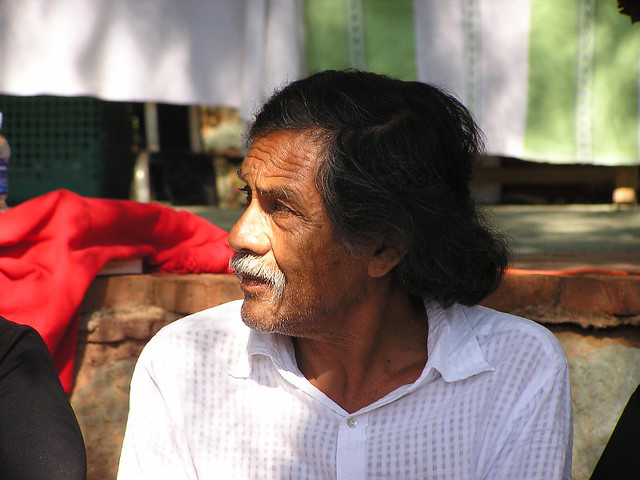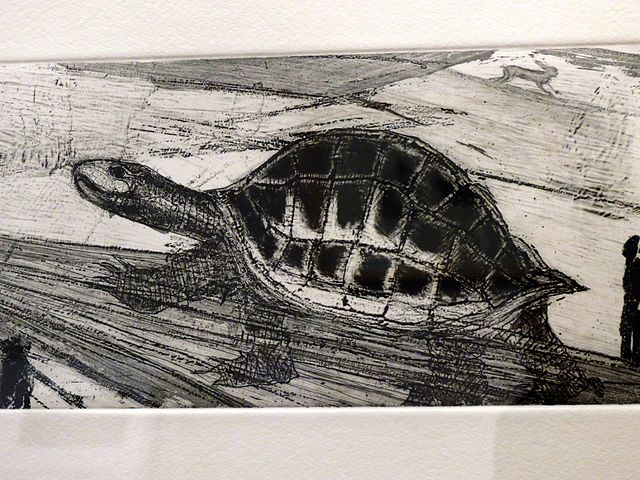The life and work of the Zapotec artist Francisco Toledo, who died September 5, were celebrated by an obituary in the Independent last week. According to Harrison Smith, who wrote the article, Toledo was a leading Mexican painter, sculptor, photographer, engraver, and tapestry designer. He also was a passionate defender of Oaxacan indigenous traditions.

He was born in 1940 in either Mexico City or in Juchitán, a city in Oaxaca—he mentioned both places in interviews—the son of a Zapotec shoemaker and tanner. He spent his childhood in the state of Veracruz exploring nearby forests and marshes. He attended an art school in Mexico City and created his first exhibition at the age of 19. He went on to Fort Worth, Texas, and then to Paris where he studied under several artists, including the Zapotec painter Rufino Tamayo.
He returned to Oaxaca in 1965 to pursue his creative art work, becoming widely known as El Maestro for the wild-man outfits he wore. He rarely gave interviews but his philanthropy, generated by the six-figure sales of his works, made him a local celebrity. He founded the Graphic Arts Institute of Oaxaca, now led by his daughter Sara, and he assisted in the establishment of a contemporary art museum, a library for the blind, and an environmental organization.

His art frequently focused on natural and mythological subjects, including a union between humanity and nature. However, he expressed pessimism about the likelihood of people ever preserving the marshes and other natural places he had explored as a child. He also frequently used Benito Juarez, the famous Zapotec president of Mexico in the mid-19th century, as the subject of his works of art.
Late in his life he devoted some 95 ceramic works to scenes of horrifying violence—severed human limbs and faces expressing horror. He was quoted as saying, “with everything that one hears in the news, in the newspapers, little by little this pushed me to do an exhibit on the theme of violence.” He added that he started incorporating red, the color of human blood, in his works.
His third wife, Trine Ellitsgaard, a weaver from Denmark, and five children survive him.